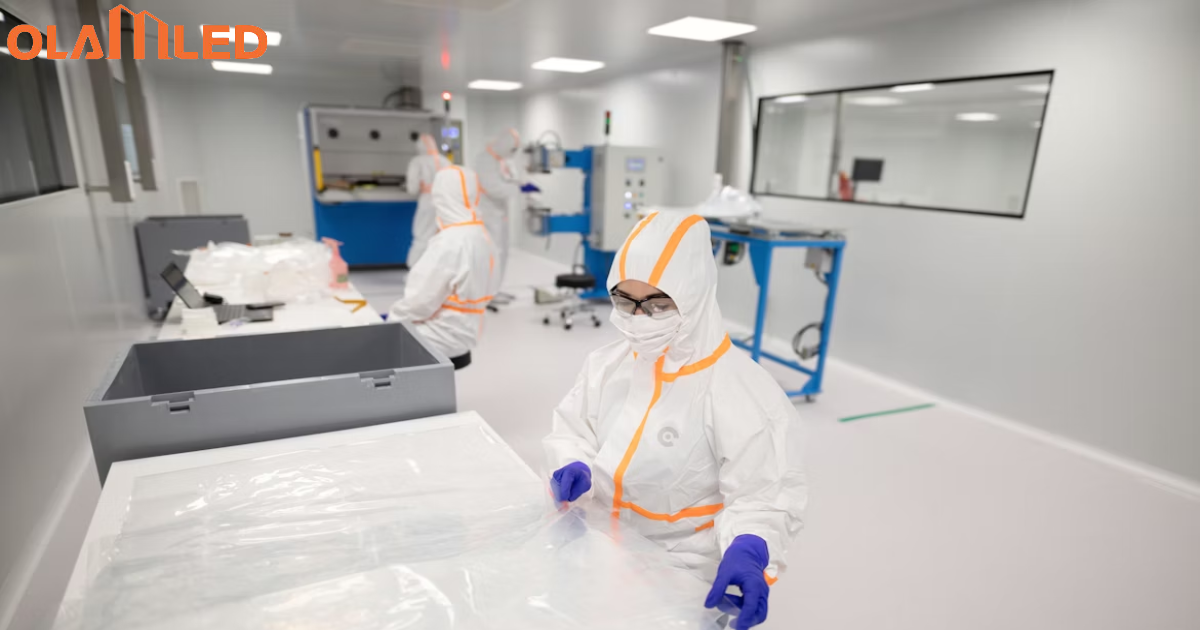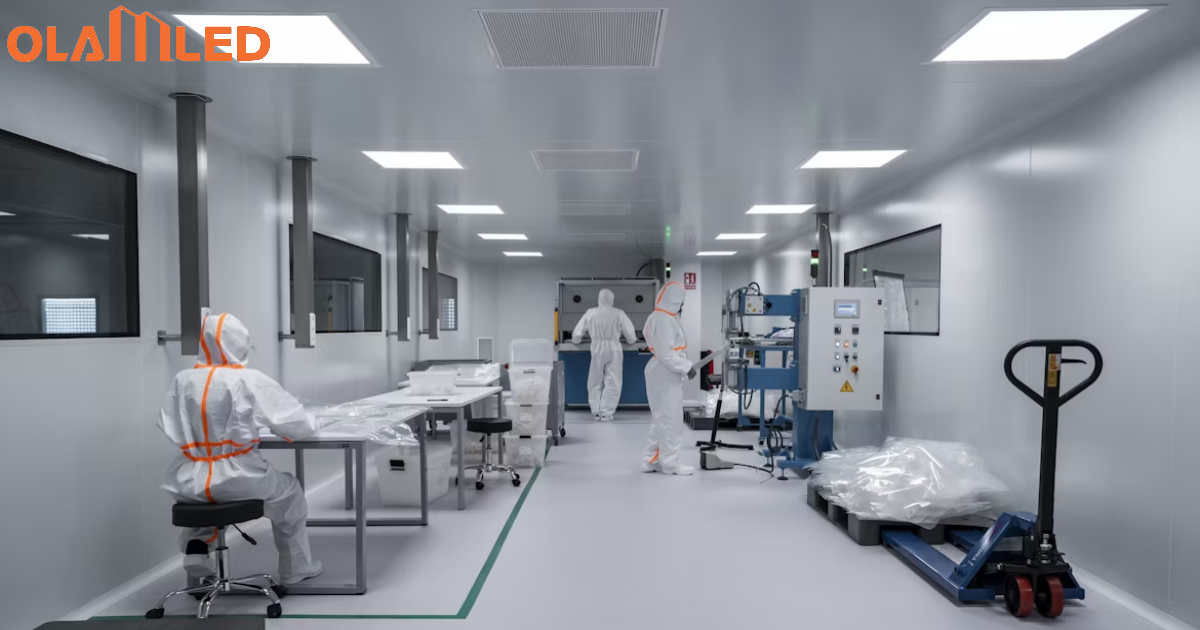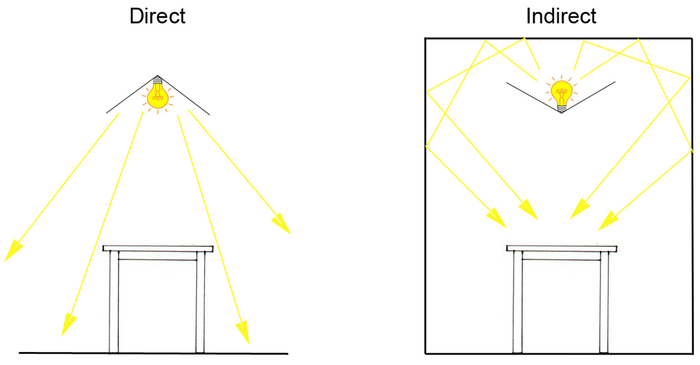
With the modern home becoming increasingly focused on interior design and functionality, it’s imperative to know about the different types of lighting available when designing a space.
Two of the most popular types are direct and indirect lighting. Each has its purpose and benefits, but how do you know which suits your particular needs?
Let’s look at what direct and indirect lighting entails and discover which works best in different scenarios.
What is Direct Lighting?
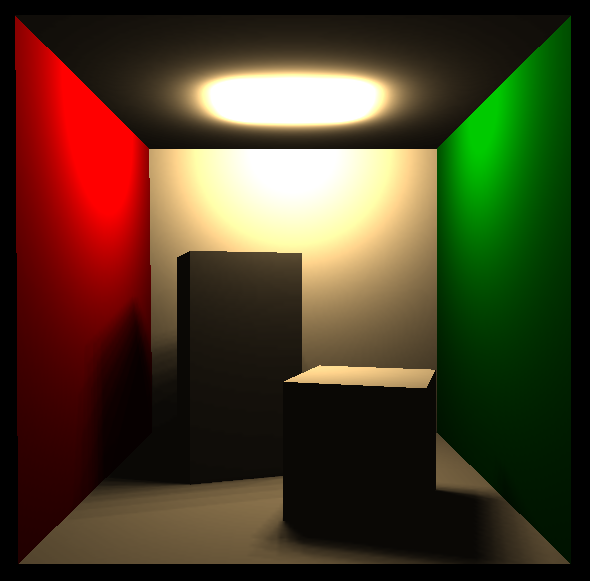
Direct lighting is a method for illuminating your home efficiently and attractively. This type of lighting infers that the point of origin is directly coming from the light fixtures, as opposed to reflecting off of other surfaces such as walls or ceilings.
Typically, direct lighting needs several strategically placed fixtures to create an even distribution of light throughout areas such as living rooms, kitchens, bathrooms, and hallways.
While traditional methods require more lumens than direct lighting, there are more options for this type of illumination, including recessed cans, ceiling lights with directional spotlights, pendants, and wall scones.
Moreover, direct lighting can add aesthetic charm to any environment and be easily controlled with a dimmer switch.
Benefits and Drawbacks of Direct Lighting:
This post will discuss the benefits and drawbacks of direct lighting, helping you make an informed decision about whether it is perfect for your space or not.
Focused Illumination
Direct lighting is an excellent choice for highlighting specific areas in a room. Unlike ambient or indirect lighting, which illuminates the entire space evenly, natural lighting focuses on a narrow beam. This lighting strategy is perfect for illuminating surfaces like countertops, artwork, bookcases, or tables.
Furthermore, it is a great way to bring attention to the specific features of a room, providing more emphasis and depth. This type of lighting is also ideal for highlighting architectural elements or unique features in your space.
Enhanced Visibility and Task Performance
Direct lighting is the perfect tool for maximizing your space’s visibility and facilitating your work. This lighting helps reduce eye strain and fatigue, improving productivity and accuracy.
Direct lighting is beneficial in many settings, from reading in the living room to cooking in the kitchen, working in an office, grooming, and getting ready in a bathroom or bedroom. Direct lighting is handy in workspaces like offices, studios, and workshops, allowing you to work efficiently and effortlessly.
Dramatic Effect
The light generated is direct and bright compared to other lighting types, allowing for spotlighting or accentuating certain features within a space. Direct lighting is the key, whether drawing attention to some textured wall paneling, highlighting a piece of artwork, or making an entire room feel alive and vibrant.
Its sharp beams will help create a warm, inviting atmosphere as it wraps around carefully chosen corners and surfaces. Its glare also ensures that functional areas remain properly illuminated – hallway lighting in particular – keeping people safe when walking around dark spaces.
Energy Efficiency
Another advantage of direct lighting is the energy efficiency it offers. This type of lighting is designed to focus the light on targeted areas, so it consumes relatively less energy to achieve the desired effect.
This efficiency makes direct lighting an ideal choice for both residential and commercial settings, as it reduces energy consumption and saves on utility costs.
Easy Maintenance
Finally, direct lighting is relatively easy to maintain, as it is easy to reach and clean. Unlike recessed or overhead lighting, direct lighting fixtures are more visible, making them easier to spot when they need cleaning or replacing. This accessibility can save you valuable time and effort in maintaining your lighting and keep your space looking its best.
Direct lighting can create harsh shadows and glare.
Direct lighting sources like spotlights, track lighting, or pendant lights can cast intense beams of light that create harsh shadows and glare on surfaces. This effect not only disturbs the overall ambiance of the space but can also create a visually unappealing environment, especially in working areas.
For example, direct lighting in a kitchen can make it challenging to see the exact texture and color of the prepared food, causing unnecessary strain on the eyes.
Direct lighting can be too bright and overwhelming in certain spaces
While direct lighting is excellent for illuminating specific areas, it can also be too bright and overwhelming in certain rooms, such as bedrooms or living rooms. Too much brightness can be distressing and uncomfortable for some people, leading to headaches or general discomfort.
Moreover, direct lighting can overpower soft wall colors or art pieces, failing to provide the ideal ambiance for relaxation and entertainment.
Direct lighting may not be suitable for ambient lighting purposes
Ambient lighting refers to the general illumination of a space rather than a direct source of light. Regarding ambient lighting, types of lighting options may be more suitable than direct lighting. It may add unwanted shadows or create hot spots, making the space chaotic and incomplete. Instead, diffused lighting options like chandeliers, wall sconces, and floor lamps are better for ambient lighting, creating an enhanced and inviting atmosphere.
You may need different types of lighting for different tasks
While direct lighting is practical and task-oriented, it should not be the only type used in space. Combining lighting types, including ambient, task, and accent lighting, can create a well-balanced ambiance with varying illumination levels.
Direct lighting can work great for tasks like reading, cooking, or applying makeup, but ambient and accent lighting can enhance a space’s aesthetic appeal and functionality.
Where to use Direct Lighting?
Adding direct lighting is a perfect way to brighten up a room and make the area feel warm and inviting. Direct lighting is an excellent option for many places, including your living room, bedroom, and bathroom. It effectively creates a focused glowing effect that can bring out the different textures in furniture and highlight decorative pieces like paintings and family photos.
Additionally, direct lighting works great for activities such as reading or working because of its reliable brightness. Whether you choose hanging pendants, wall sconces, or track lights, this type of lighting fixture will surely add a dynamite aesthetic!
What is Indirect Lighting?
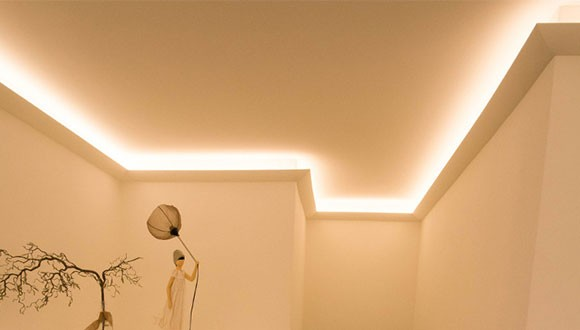
Indirect lighting is a design that involves illuminating a space so that the light source is not directly visible, but the light is reflected off surfaces to create a soft and diffused glow. The light is typically directed towards the ceiling or walls and then reflected into the room. This type of lighting is often used to create a relaxing and ambient atmosphere in a room and is commonly used in residential and commercial spaces. Indirect lighting can also be used to highlight architectural features or artwork.
Benefits and Drawbacks of Indirect Lighting:
Indirect lighting is an increasingly popular design technique due to its soft and diffused lighting effect. However, it has both advantages and disadvantages.
Creates a soft and diffused lighting effect:
Indirect lighting creates a soft and diffused lighting effect that is less harsh on the eyes than direct lighting. This lighting design technique can make a room feel more comfortable and inviting.
Reduces glare and shadows:
Indirect lighting reduces glare and shadows, making seeing and moving around a space more accessible. It also creates a more comfortable environment for reading, watching TV, or simply relaxing activities.
The illusion of spaciousness:
Indirect lighting can make a room feel more spacious by illuminating walls and ceilings, creating a sense of height and openness.
Enhances ambiance and mood:
Indirect lighting can enhance the ambiance and mood of a space, creating a calming and relaxing atmosphere. This is ideal for bedrooms, living rooms, or other areas where people unwind.
Drawbacks
May not provide enough focused illumination for task lighting purposes:
Indirect lighting may not provide sufficient focused illumination for tasks that require direct lighting, such as reading, cooking, or working on a project. In such cases, additional lighting sources may be required.
Can be more difficult to install than direct lighting:
Direct lighting is more challenging to install than indirect lighting. It requires careful planning and positioning of light fixtures to achieve the desired effect.
May require additional equipment or fixtures to achieve the desired effect:
Indirect lighting may require additional equipment or fixtures, such as reflective surfaces or light diffusers, to achieve the desired effect. This can increase the cost and complexity of the installation.
Where to use Indirect Lighting?
Indirect lighting can be a great way to create a unique and stylish atmosphere in any room. One of the best places to use it is in living rooms, where creating a warm and inviting space for entertaining or relaxing is important. You can use indirect light around windowsills, shelves, bookcases, or cabinets, to light up specific areas of the room without creating harsh shadows.
Likewise, indirect lighting is also great for enhancing moods in dining rooms. Think of hidden lights tucked away to provide ambient illumination from under the table or along walls. Or bedrooms. Such as with wall sconces behind the bed headboard or lamps placed strategically around the room.
Whatever your taste and needs are, incorporating indirect lighting can help bring out the beauty of each area in your home.
Factors to Consider When Choosing Direct Vs. Indirect Lighting
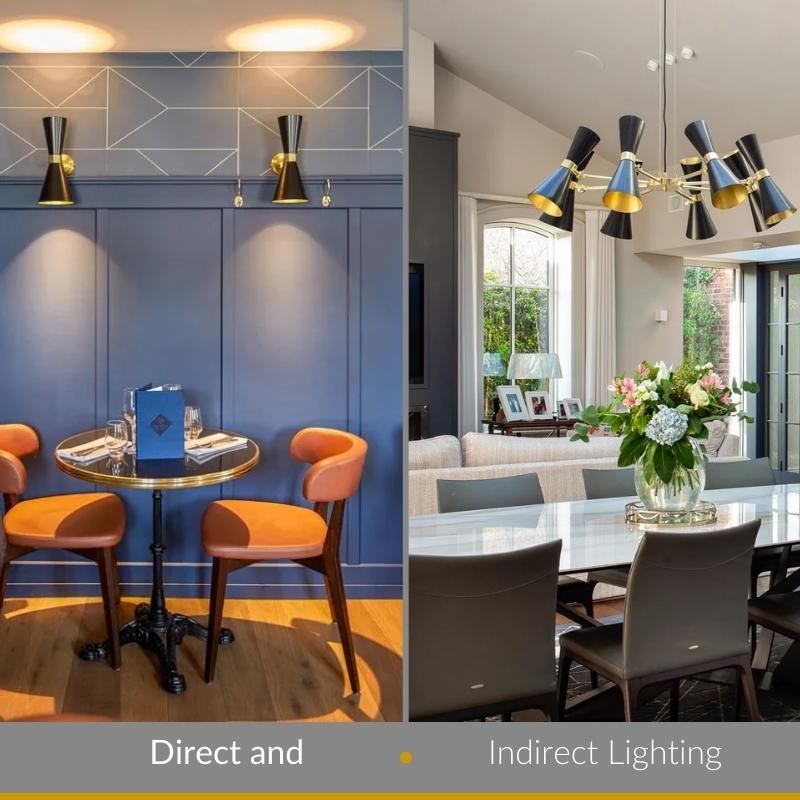
Choosing the right lighting solution can be a daunting task. There are tons of factors that come into play, including purpose, room size, personal preferences, and energy efficiency. This section explores the differences between direct and indirect lighting solutions to help you decide which type of lighting is best for you.
Purpose of the Lighting (Task-Oriented vs. Ambient)
The first factor to consider when choosing between direct and indirect lighting is what kind of purpose the lighting should serve. Direct lighting is typically used for task-oriented purposes such as reading or studying.
It offers a focused beam of light that provides good visibility in specific areas. On the other hand, indirect lighting is often used to create an ambient atmosphere in a room. It gives a diffused light that illuminates an entire space without creating harsh shadows or bright spots.
Room Size & Layout
Room size and layout are also important when choosing between direct and indirect lighting solutions. In larger rooms with high ceilings, indirect lighting works well because it provides even illumination throughout the whole space.
However, direct lighting might be more appropriate if you have a smaller room with lower ceilings because it can give concentrated beams of light in areas that need it most.
Additionally, recessed ceiling lights can be a great option if you have limited space in your room since they provide both direct and indirect illumination without taking up much space on your walls or floors.
Personal Preferences & Aesthetics
Personal preferences and aesthetics also play an important role when deciding between direct and indirect lighting solutions for your home or business space. If you prefer a more modern look, recessed ceiling lights may be the best option since they offer both types of illumination without being too intrusive in your overall design aesthetic.
On the other hand, if you prefer a traditional look, wall sconces or chandeliers could be better options since they provide ambient illumination while maintaining an elegant appearance in your room’s design scheme.
Energy Efficiency & Sustainability
Last but not least, it’s essential to consider energy efficiency when selecting your lighting solution and its sustainability over time (i.,e., how long will it last?). LED bulbs are becoming increasingly popular due to their energy efficiency. They use up to 90% less electricity than traditional bulbs—and their lifespan (is upwards of 20 years!). Additionally, dimmable LED bulbs are now available, allowing you to adjust the brightness according to your needs while saving money on energy costs.
Is Indirect Lighting Better than Direct Lighting?
Indirect lighting is generally better than direct lighting in many situations. This is because indirect lighting provides a softer, more diffused light that is less harsh on the eyes and creates a more comfortable and inviting atmosphere. Direct lighting, however, can be harsh and create shadows, making it less comfortable for extended periods. Direct lighting is best used when a bright, focused light is needed, such as in task lighting.
Indirect lighting can also help to reduce glare and eye strain, which can be beneficial in work environments or areas where people spend a lot of time.
Additionally, indirect lighting can create a more visually appealing space, highlighting architectural details and creating a more cohesive lighting design.
Conclusion
Choosing between direct and indirect lighting depends on the intended use of the space and the desired ambiance. Direct lighting offers focused illumination, enhanced visibility, a dramatic effect, energy efficiency, and easy maintenance.
However, it can create harsh shadows, be too bright and overwhelming in certain spaces, may not be suitable for ambient lighting, and must be supplemented with other types of lighting.
Ultimately, the decision to use direct lighting should be made based on the intended use of the space and the desired atmosphere. Combining lighting types can create a well-balanced ambiance with varying illumination levels, enhancing a space’s aesthetic appeal and functionality.

